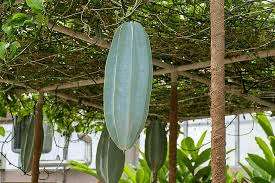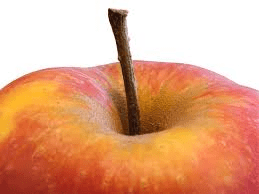Fluted Pumpkin Leaf Farming (Telfairia occidentalis): Complete Growing Guide for High Yields
Fluted pumpkin leaf (Telfairia occidentalis), also known as Ugu leaf in Igbo and Eweroko in Yoruba, is used to prepare a variety of delicacies around the world. This plant is widely used and consumed in many parts of Nigeria, particularly among the Igbos, as well as in other countries around the world.
Pumpkin leaf (ugu leaf) can be used to make a variety of delicious soups such as egusi, ogbono, and many more.
This plant is not only limited to the food aspect but also can be used in the preparation of herbal medicine to treat Malaria.
It is widely believed in Nigeria that the mixture of mashed pumpkin leaf water and milk can give blood when taken.
The fluted pumpkin seeds are edible and the oil from these seeds can be used for cooking and soap making.
This plant has plenty of health benefits, but in this article, we will only be sharing tips and guide on how to grow this plant.
According to research, ugu leaf is estimated to be consumed by over 30 to 35 million people in Nigeria, which makes it a very popular plant in the country as well as other parts of the world.
Read Also: The Ultimate Step-by-Step Guide to Vegetable Gardening
Fluted Pumpkin Leaf (Telfairia occidentalis) Complete Care Guide

Below are the recommended ways to care for your fluted pumpkin leaf farm to encourage higher crop yields.
(1) Fluted Pumpkin Leaf Light Requirements
The ideal growth conditions for the pumpkin plant include a full day of sun. To perform optimally, pumpkin leaves require at least 6 – 8 hours of sunlight per day. Therefore, selecting a location that gets about 8 – 10 hours of sunlight per day is recommended.
(2) Fluted Pumpkins Water Requirement
Fluted pumpkin plants need to be watered frequently to stay green and growing, therefore, you are advised to begin irrigation (watering) on the farm and its surroundings every two days, in the morning and evening, after planting the fluted pumpkin seeds.
However, irrigation or water wetting may not be necessary during rainy seasons, but it is during dry seasons or droughts.
As a result, you’ll need a reliable source of water, which could be a well or a borehole depending on your resources.
(3) Temperature Requirements of Fluted Pumpkins
A fluted pumpkin is a plant that grows at elevations of up to 1,000 meters in the lowland, humid tropics.
It thrives in climates with annual daytime temperatures ranging from 21 to 30°C, but it can tolerate temperatures ranging from 19 to 38°C.
Temperatures as low as 5°C are not a problem for the plant as the fluted pumpkin plant can also survive at temperatures around that level.
Read Also: The Basics of Planting and Growing a Vegetable Garden
(4) Fluted Pumpkin Plant Fertilizer and Manure Requirements
A nitrogenous fertilizer, such as urea, is the best fertilizer for ugu because it is a leafy plant and such fertilizer promotes the growth of the plant’s vegetative parts, or leaves.
Before planting the fluted pumpkin seed, apply livestock dungs/wastes such as poultry manure, cow dung, rabbit urine, and the like to the farm.
The manure application should also be repeated after 4 weeks and again after 6 weeks of planting.
However, for those who want to use inorganic fertilizer, NPK 15 15 15 and urea is good to use. Meanwhile, organic fertilizer has been shown to be the best and safest for fluted pumpkin plants.
To encourage maximum yield from your vegetable farm, you are encouraged to provide the soil with all the nutrients it requires in form of fertilizers and manures.
Fluted Pumpkin Leaf Methods of Propagation

Now that you know a few things about this amazing vegetable plant, the next logical step for you is to find ways to grow it.
Below are tips that will guide you through the planting of these vegetables.
(1) Site Selection
The first step is to secure a plot of land on which to plant everything. Obtaining land for this purpose is difficult because it must have a PH of 6.5-7 and be neutral.
However, with the help of technology, the stress can be reduced as you can use a PH testing device for that.
Another thing to look out for is that the land receives enough sunlight. The growth of your pumpkin leaf will be determined by the PH of the soil and the amount of sunlight available.
You should be aware that the size of your harvest is determined by the size of your land, so the more land space you have, the larger your harvest.
But that doesn’t mean you can start with a small piece of land for a start.
One good thing about this wonderful vegetable is that it can be planted anywhere in the country since there are no ideal conditions for the optimal growth of pumpkin leaf.
Make sure your land is well-drained, pumpkin leaf doesn’t do well in waterlogged areas.
Read Also: Foods and Drinks That Can Increase your Blood Sugar Level
(2) Land Preparation
After getting a piece of land for your farm, the next thing is to clear the farmland and apply organic manure for like 2 weeks before you start planting anything on it.
The most effective farm fertilizer is nitrogenous fertilizer, such as urea. The urea accelerates the growth of the leaves. Another possibility is to apply NPK fertilizer in the following ratios: 15:15:15.
(3) Seed Sourcing and Preparation

After taking care of your land space, the next step is to buy the fluted pumpkin seeds from any local market nearby.
You can also get these seeds from farmers who are also into farming pumpkin leaves.
To prepare for planting, scoop the seeds from the pods. You can get as many as a hundred seeds from one pumpkin pod.
The seeds quite often have juicy flesh and strings surrounding them. This flesh must be removed before planting. Failure to do so may result in the seed rotting in the soil.
The seeds can be removed by placing them in a strainer and running water through it. While doing so, use your finger to scrape away the juicy flesh and strings.
This, however, only applies to fresh seeds. You may however skip this step if you purchased dried seeds.
The following step is sun-drying, which can take up to 7 days. It is critical to allow for adequate sun drying before planting.
The procedure helps to reduce moisture content and promote germination. To prevent insect and fungi attacks, you can also treat the seeds with an insecticide-fungicide mixture.
(4) Planting
As mentioned earlier pumpkin leaf grows between April and May.
During this period the rain is a bit low, this vegetable won’t do well in high rainy conditions;
(1) Make sure that the seed is buried in the soil one foot apart. Ensure that the seeds are placed vertically with the pointed edge inserted into the soil before planting.
The plant’s depth should not be too deep; it should be between 15 and 25cm deep, which is ideal for your seeds.
(2) After you have planted your seeds, then you will need to start watering them every day for at least 2 weeks.
It begins to germinate after 1 to 2 weeks of consistent maintenance and watering.
During the maintenance period, you will have to be removing weeds and also ensure your plant doesn’t starve from water and other vital nutrients.
Read Also: Cod Liver Oil Capsules: All You Need to Know About
Fluted Pumpkin Leaf Maturity, Harvesting, and Storage

Here are the signs and symptoms of fluted pumpkin plant maturity, its harvesting process and procedures as well as the storage methods;
(1) Fluted Pumpkin Leaf Maturity
With adequate water, fluted pumpkin seeds germinate 10 days after planting the seeds on the ground.
Farmers can start harvesting their fluted pumpkin plants from two to four weeks after planting or when the stems are long enough to be cut off.
(2) Fluted Pumpkin Leaf Harvesting
Farmers should use their hands or knives to cut the stem of the ugu leaves a little distance away from the bottom of the stem during harvest.
You should position your hands where you have the nodes and then cut off the stem from the bottom of the stem gently.
Regarding when you should harvest your fluted pumpkin pods, the right time to harvest the pods is when tendrils are dried, that is the sign for you to know that the pod is ripe for harvest; sometimes the fluted pumpkin pods may even fall off on their own.
Fluted Pumpkin Leaf (Telfairia occidentalis) Problems, Causes, Control, and Preventive Measures
You should protect your farm from goats and herbivores. These animals are known for destroying ugu farms.
Also, some common pests destroy ugwu leaves Examples include grasshoppers, beetles, aphids, thrips, and green shield bugs.
Diseases that affect the leaves include the white leaf spot disease and the telfairia mosaic virus disease.
Some fungal diseases may affect the seeds and render them useless during storage. To keep insects and fungi at bay, spray the seeds with insecticide and fungicide.
When you notice that your pumpkin has begun to germinate, take a stick about 1-2 meters long and place it close to the plant. You’ll notice the plant climbing and rolling on the stick after a while.
Staking helps to prevent diseases, especially during the rainy season, but it is not required for commercial pumpkin leaf farming.
The pumpkin leaf begins to appear between April and May; the plant is drought tolerant, and the seeds are viviparous.
Due to the nature of the plant, the seeds can only be stored for 3 days after it has been extracted.
Pumpkin leaf can be intercropped with other food and vegetables e.g. yam, maize, and cassava.
Read Also: Lakeshore Recycling Systems (LRS) Complete Guide









